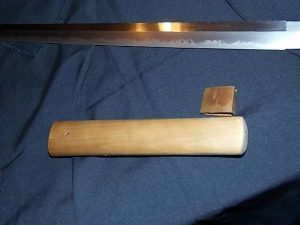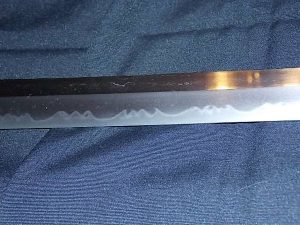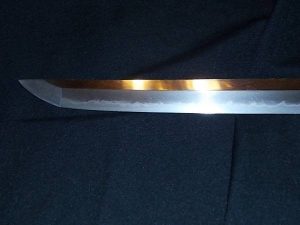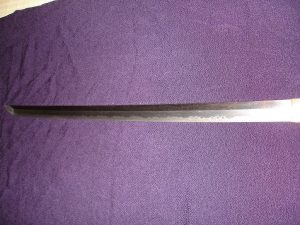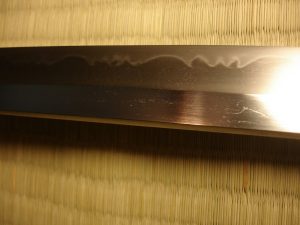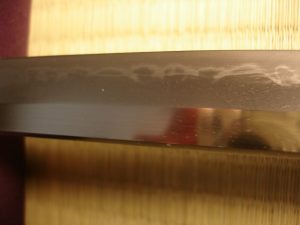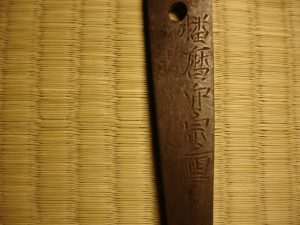Wakizashi in shirasaya signed but not dated Harima no Kami Muneshige.
播磨の守宗重
This longer wakizashi has good balance. The sugata has little sori tending to be slight koshizori.
Jihada is itame/mokume. Hamon has distinct nioi deki line and is midair based on gunome with sanbonsugi.
Hataraki with sunegashi and kinsuji.
Chu kissaki with ko-maru boshi and maybe slight hakikake. Nakago is ubu, standard shape with ha agari kurijiri. Yasurime is katte sagari.
Nakago is ubu with kengyo shape and measures 20.0 cm. (just under 8 in.).
Yasurime is kattesagari.
The blade is masame and ko-itame with sugaha hammon in nioi-deki.
There were 3 generations of sword smiths from Harima province (also known as Banshū 播州) signing Muneshige.
The 3 generations of smiths are:
st
(1 ) Banshū Himeji-jū Muneshige working in Keichō period (1596-1615), real name
Inoue Ichizaemon
(2nd) Banshū-jū Fujiwara Muneshige, also signed Banshū-jū Hitachi no KamiŌtsuge/Daijū, working in Kanbun period (1661-1673), real name Inoue Ichi’emon
(3rd) Owari no Daijō Muneshige, working in Genroku period (1688-1704), don’t have his real name.
I have not been able to find an oshigata (nakago rubbing) of any of these smiths, so cannot compare signatures, and from my research they usually signed Banshū or Banshū-jū, not Harima). Additionally, the “no Kami” title was not usually associated with the area (Harima/Banshu), indicating this may be a gimei and they confused the signature.
Overall this is a nicely made piece and very sharp.
Asking Price: $2,600
